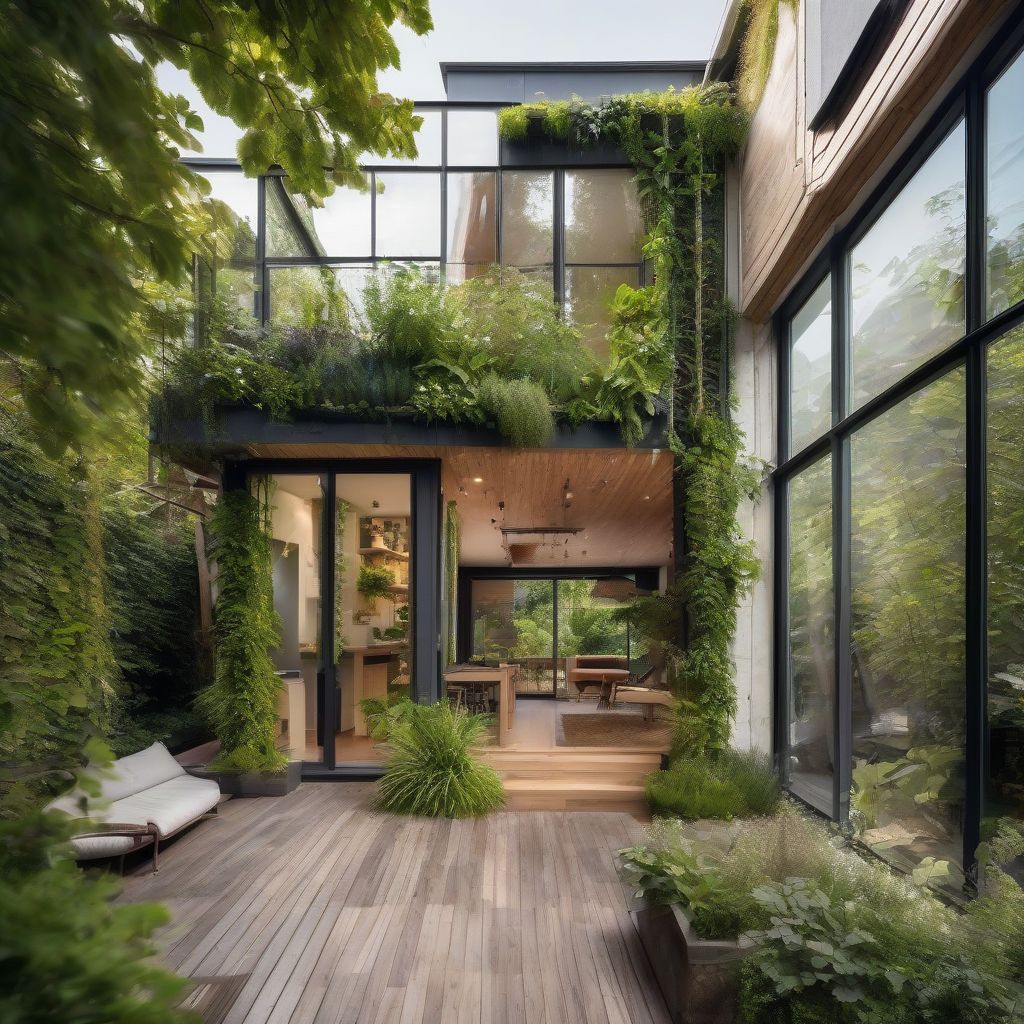Imagine waking up in a city apartment filled with natural light, surrounded by lush greenery. You step onto your balcony, a mini oasis bursting with fresh herbs and vegetables, and breathe in the clean, crisp air. This isn’t a scene from a futuristic utopia, but a glimpse into the future of green homes in urban areas.
As cities grow denser and climate change concerns escalate, the demand for sustainable and eco-friendly living spaces is on the rise. Green homes, designed with energy efficiency, sustainable materials, and a reduced environmental footprint, are no longer a niche concept but a crucial aspect of future urban planning.
Redefining Cityscapes: Key Features of Green Homes
Green homes are characterized by a holistic approach to sustainability, integrating design elements and technologies that minimize their impact on the environment while enhancing the well-being of their residents. Here are some defining features:
1. Energy Efficiency:
- Solar Power: Rooftop solar panels harness renewable energy, reducing reliance on fossil fuels.
- Smart Home Automation: Systems that intelligently control lighting, temperature, and appliances, optimizing energy consumption based on occupancy and usage patterns.
- High-Performance Insulation and Windows: Minimizing energy loss through effective insulation and double or triple-paned windows.
2. Water Conservation:
- Low-Flow Fixtures: Toilets, faucets, and showerheads designed to reduce water consumption.
- Rainwater Harvesting: Collecting rainwater for irrigation, flushing toilets, or other non-potable uses.
- Greywater Recycling Systems: Treating and reusing wastewater from showers, sinks, and washing machines for irrigation or flushing.
3. Sustainable Materials:
- Reclaimed Wood and Recycled Materials: Reducing the demand for new resources by incorporating salvaged and recycled materials.
- Bamboo and Cork Flooring: Sustainable and rapidly renewable alternatives to traditional hardwood flooring.
- Low-VOC Paints and Finishes: Improving indoor air quality by opting for paints and finishes with low levels of volatile organic compounds.
4. Green Spaces:
- Green Roofs: Rooftops covered with vegetation, providing insulation, absorbing rainwater, and reducing the urban heat island effect.
- Vertical Gardens: Living walls that bring nature indoors, improve air quality, and enhance aesthetics.
- Edible Landscaping: Integrating fruit trees, vegetable gardens, and herb spirals into the landscape design.
 Urban Green Home
Urban Green Home
The Benefits: Why Green Homes Are the Future of Urban Living
The shift towards green homes offers a myriad of benefits for individuals, communities, and the planet:
1. Environmental Sustainability:
- Reduced Carbon Footprint: Green homes consume less energy and water, significantly lowering greenhouse gas emissions.
- Improved Air and Water Quality: By reducing reliance on fossil fuels and minimizing water pollution, green homes contribute to cleaner air and water in urban areas.
- Conservation of Resources: The use of sustainable and recycled materials reduces the strain on natural resources.
2. Economic Advantages:
- Lower Utility Bills: Energy and water efficiency translates into significant savings on monthly utility costs.
- Increased Property Value: Green homes are in high demand, commanding higher resale values and attracting environmentally conscious buyers.
- Green Jobs: The construction and maintenance of green homes create new job opportunities in emerging green industries.
3. Health and Well-being:
- Improved Indoor Air Quality: Green building materials and ventilation systems promote healthier indoor environments, reducing the risk of respiratory problems and allergies.
- Enhanced Comfort: Natural light, thermal comfort, and connection to nature contribute to a more comfortable and enjoyable living experience.
- Reduced Stress: Studies have shown that access to nature and green spaces has positive effects on mental health and stress reduction.
Addressing the Challenges: Making Green Homes Accessible
While the advantages of green homes are evident, several challenges need to be addressed to ensure their widespread adoption:
1. Affordability:
- Initial Costs: Building a green home can involve higher upfront costs compared to conventional construction.
- Government Incentives and Subsidies: Governments can play a crucial role in promoting affordability through financial incentives, tax breaks, and subsidies for green building practices.
2. Awareness and Education:
- Consumer Education: Raising awareness among homeowners about the long-term benefits and cost savings of green living.
- Training for Builders: Equipping builders and contractors with the knowledge and skills to construct and renovate homes using green building principles.
3. Technological Advancements:
- Continued Innovation: Investing in research and development to create more affordable and efficient green technologies.
- Smart Grid Integration: Modernizing energy grids to accommodate renewable energy sources and support the integration of smart home technologies.
Green Homes and Urban Farming: A Perfect Pairing
The future of green homes extends beyond energy efficiency and sustainable materials. It embraces a holistic approach to urban living, including the integration of urban farming practices. Imagine stepping onto your balcony to harvest fresh herbs for dinner or tending to a rooftop vegetable garden. Urban farming in green homes offers numerous benefits:
- Fresh, Local Produce: Reducing reliance on long-distance food transportation and providing access to fresh, healthy food.
- Reduced Food Waste: Growing food at home encourages mindful consumption and minimizes food waste.
- Community Building: Shared gardens and urban farming initiatives foster a sense of community and encourage social interaction.
Interested in minimizing food waste in the city? Learn more about how you can make a difference in our guide: How to Minimize Food Waste in the City.
A Glimpse into the Future: Green Homes Leading the Way
The future of green homes in urban areas is bright. As cities become increasingly populated, the demand for sustainable and resilient living spaces will continue to grow. Imagine:
- Smart Cities: Green homes seamlessly integrated into smart city infrastructures, optimizing energy consumption, transportation, and resource management.
- Vertical Forests: Buildings adorned with trees and vegetation, creating vertical ecosystems that purify air, provide shade, and enhance biodiversity.
- Self-Sufficient Homes: Green homes equipped with renewable energy systems, rainwater harvesting, and urban farming capabilities, reducing their reliance on external resources.
Conclusion: Embracing a Greener Future
The future of urban living hinges on our ability to create sustainable and resilient cities. Green homes, with their focus on energy efficiency, sustainable materials, and a reduced environmental footprint, offer a compelling solution to the challenges of urbanization and climate change.
By embracing green building practices, investing in renewable energy, and promoting urban farming initiatives, we can create healthier, more sustainable, and ultimately more livable cities for generations to come.
Let’s start building a greener future, one home at a time. Share your thoughts on the future of green homes in the comments below! Are you ready to embrace a more sustainable way of life?
[amazon bestseller=”vertical gardening”]
